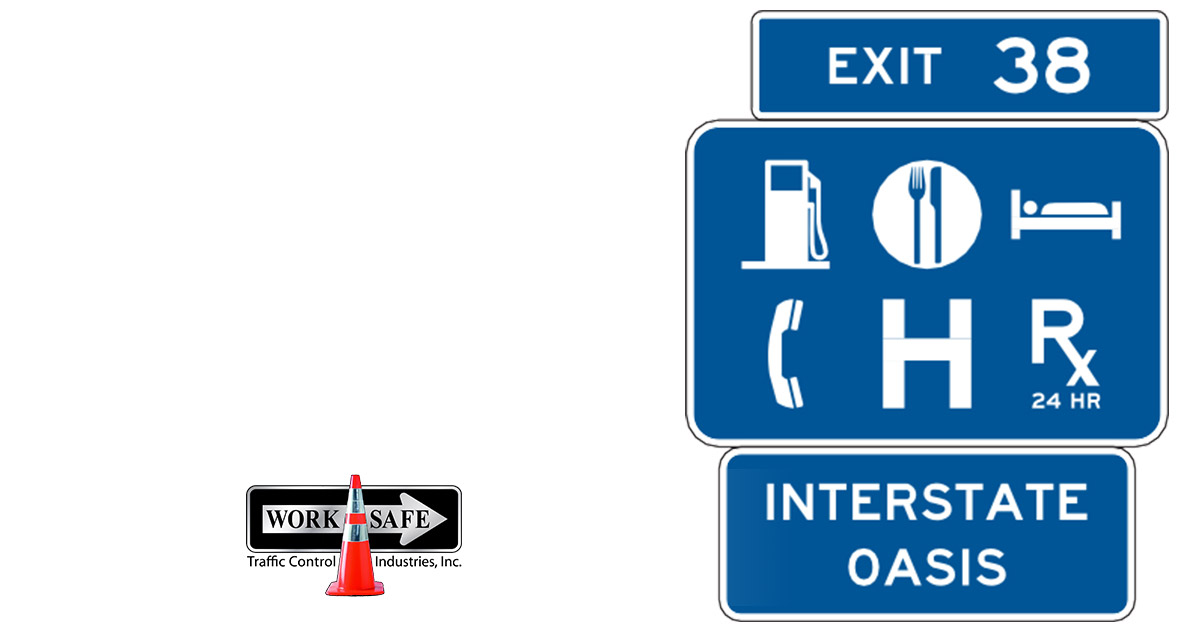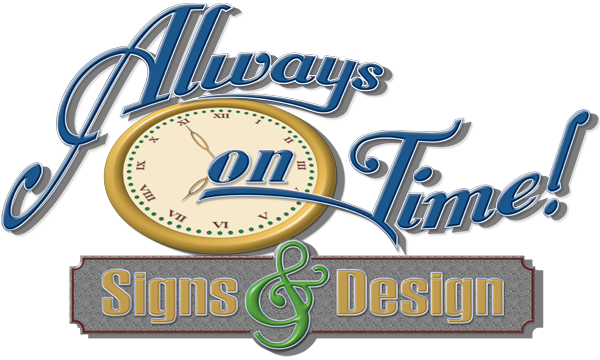
Road signs come in a variety of shapes, colors, and while you may not have realized that these characteristics hold any particular significance, nothing could be further from the truth. In truth, the shape and color of a road indicator can indicate its purpose. For instance, an inverted triangle will always signify a Yield sign just like an octagonal red indicator will always tell you that it’s a Stop sign.
Blue-colored signs also have their own specific meaning, and you can count on all blue traffic signs symbolizing some very specific aspects of traffic control. Read on to find out exactly which types of traffic control are most commonly associated with blue road indicator.
What Do Blue Road Signs Indicate?
Blue road signs are used to convey several different types of information to pedestrians, bicyclists, and motorists. The specific type of information will depend on the shape of the indicator and the location it is placed in. Blue circular signs are meant to instruct drivers to use specific lanes or routes which are available to them, or which are available to pedestrians.
In some cases, they also provide mandatory instruction, such as when they tell a motorist that you are required to turn left on the roadway up ahead. When blue indicators are in a rectangular shape, they’re more often used for informational purposes, and in some cases, to provide directions for motorists.
Blue road signs are very commonly used to indicate that road user services are available nearby, for instance, tourist information about a specific area. In some cases, blue road signs are also used to indicate evacuation routes, which should be taken in the event a rapid departure from the area is required.
What are the Most Common Types of Blue Road Signs?
Some of the most common types of blue indicators that you might see along the roadside are those which indicate the presence of a hospital up ahead, or when emergency medical services are available nearby. It’s also very common to see a blue road sign which has a knife and fork in the center of a white background to show that restaurants are close by.
In the same vein, you might see a blue background with a white bed in the center and a person sleeping in that bed, which is intended to show that lodging is in the immediate area if you happen to be a weary traveler. Vacationers might be happy to see a blue sign which has a tepee-looking symbol in the center of it, and this indicates that tent camping can be arranged for somewhere in the immediate area.
There are a number of different blue indicators which have a white fuel station depicted in the center, and these can have a number of different meanings. The one which is a simple filling station is meant to show that gas is available just up ahead, whereas one with a large blue D on the pump means that diesel fuel can be purchased.
When you see a pump with the letters CNG running vertically down the pump symbol, it means that compressed natural gas can be obtained somewhere nearby. And when you see a white filling pump with the letters EV depicted somewhere on the pump, you’ll know that up ahead, there is an electric vehicle service station, where you can get your battery charged.
Another very common blue traffic sign that you might see when traveling on interstate highways is one with the white lettering to indicate that a Rest Area is ahead. Many travelers will also encounter a familiar blue indicator instructing them to call 511 (or some other number) to obtain traveler information. This information be extremely helpful in locating landmarks or in getting directions.
If you happen to come across a blue sign with a white question mark placed in the center, it simply means that information is available somewhere in the immediate vicinity and that you should be on the lookout for an information center. While these are the most common types of blue indicators currently being used, they are by no means the only ones, so don’t be surprised to see a variety of other possible informative blue road signs.
Other Common Colors for Road Signs
The one thing to be aware of about the colors of road signs used in this country is that they are all mandated by the Federal Highway Administration, and that means they are standardized in every state in the country. An orange indicator that you see in New York State means the same thing as an orange indicator that you see in Washington state, and a blue sign that you see in New Jersey will have the same meaning as a blue sign that you see in the state of Texas.
So once you learn the color schemes associated with signs, you can go anywhere in this country and expect them to have the same meaning. For instance, as you have already learned, blue signs can be very informative and can let you know when a rest area is nearby, or when a hospital is in close proximity. If you happen to be running out of gas, blue signs will also tell you that a filling station is up ahead, so you’ll be rescued and won’t have to run out of gas on the highway.
Orange-colored signs will generally alert you to the presence of a work zone in the area, and they will provide you with information on areas to avoid, or areas where slower traffic speed is required. Green signs are very helpful if you’re driving along unfamiliar highways because they can guide you to different destinations.
Red traffic signs are generally reserved to indicate that the driver should stop up ahead, and yellow signs provide warnings or cautions about certain driving conditions.
Many yellow road signs will advise that you proceed with caution and to lower your speed. Black-and-white road signs are usually reserved for providing information about enforceable regulations and laws, for instance, speed limits. Brown signs are generally used to guide drivers to public recreational areas, national landmarks, scenic sites, and national parks.
Final Thoughts
Now that you know there is a method to the madness of road sign colors, you’ll be able to identify what type of road sign you’re looking at just by noting its color. The actual symbol or verbiage accompanying the color of the road sign will simply clarify the specific type of sign it is, and will further instruct you about traffic information you need to be aware of.
If your organization of governmental agency has a need for any specific type of road sign, regardless of color, shape, or size, the one company in the U.S. that you should consult with first is Worksafe Traffic Control Industries, Inc. For more than 25 years now, Worksafe has been the acknowledged leader in constructing durable, highly visible, and very effective traffic control signs and accessories. Contact us today with any inquiries you may have, or to obtain a quote for some combination of products.
If you have any questions or want to get in touch, please contact us!

